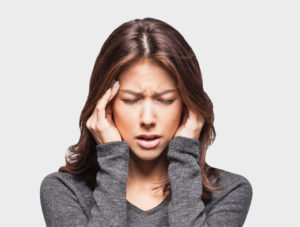People who have chronic headaches may notice that they can worsen during the summer months, especially for those who suffer from migraines. Researchers still haven’t pinpointed the cause behind migraines, but according to the Migraine Research Foundation, researchers have concluded migraines are neurological disorders that involve nerve pathways and brain chemicals.
You may not suffer from migraine headaches, but if you find that headaches occur more often for you during the summer months, then summer headache triggers could be to blame. Here are some reasons why.
Allergens
Allergens that are present during the summer months pose a threat to persons suffering from headaches. Hay fever is big during summer and can cause headaches as it affects sinus nasal passages. Sinus headaches are characterized by facial pain, throbbing on one-side of the head and are exacerbated by light, especially sunlight. Headaches can originate in the sinus area, however; these types of headaches aren’t always diagnosed as sinus headaches and could be migraines. Seek a family medicine provider for diagnosis and treatment.
Humidity
High humidity can trigger headaches for people who are prone to them. Think ahead. Your local weatherman or weather apps you can download to your phone are great resources for anticipating when you may have a headache brought on by humidity and other weather-related events. This will allow you to take preventative action before the onset of a headache. Ask your family medicine provider about taking an over-the-counter medication before a headache occurs.
Barometric Pressure
As barometric pressure decreases the chance of a headache increases. Even a slight change in atmospheric pressure can trigger headaches, especially when it’s humid and stormy. Headaches can also be caused by changes in altitude as folks fly away on summer vacation or hike vertically up hills and mountains. Also, there is more storm activity during the summer and this, in turn, can also be a trigger.
Summer Lifestyle
We have a tendency to enjoy a few lifestyle changes during the summer. More people take a vacation and even those who don’t take some time in the sun by the pool, on a summer picnic or at the beach. We also tend to cook outdoors and enjoy the company of friends. Basically, we take advantage of every waking hour of daylight to have as much fun as possible. We may have more fun, but the lifestyle change also affects our bodies. Balance your summer lifestyle to ward off headaches.
Dehydration
Dehydration occurs when the body is losing more fluid than it is taking in. Becoming dehydrated is extremely dangerous. In addition to triggering headaches, dehydration can cause serious problems, even death if not treated. Drinking water or Gatorade will keep dehydration at bay and headaches, too. Water is the best solution for restoring hydration. Never assume that alcoholic drinks can rehydrate you. In fact, they actually leave you dehydrated and cause pause pounding headaches.
Headaches are more common during the summer months, but Advanced Medical Clinic is your resource for good health and patient-centered care during every season. At Advanced Medical in Wellington and Royal Palm Beach, Florida, we offer a high standard of primary and urgent care. Our comprehensive treatment options are designed to help you achieve a better quality of life through the management of many urgent and non-urgent conditions. As a husband and wife team, internal medicine specialist Dr. Ishan Gunawardene and nurse practitioner Shariffa Gunawardene understand what family health means and its true importance.
Avoid a headache! The friendly staff at Advanced Medical welcomes your call and looks forward to serving you. If you have any questions about our primary care services, please call our office at (561) 434-1935. To schedule an appointment, you can call us or use our secure online appointment request form.



